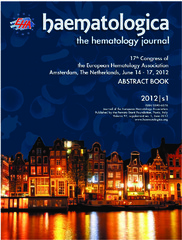Приказ основних података о документу
Physiological and proteomic aspects of functional cord blood cd34+cells maintenance at 4 degrees c under hypoxia and hypercapnia
| dc.creator | Vlaški, Marija | |
| dc.creator | Negroni, Luc | |
| dc.creator | Kovačević-Filipović, Milica | |
| dc.creator | Berets, S. | |
| dc.creator | Le Reverend, G. | |
| dc.creator | Hammoud, M. | |
| dc.creator | Chevaleyre, Jean | |
| dc.creator | Duchez, Pascale | |
| dc.creator | de la Grange, P. Brunet | |
| dc.creator | Lafarge, Xavier | |
| dc.creator | Boiron, Jean-Michel | |
| dc.creator | Ivanović, Z. | |
| dc.date.accessioned | 2020-06-03T13:36:35Z | |
| dc.date.available | 2020-06-03T13:36:35Z | |
| dc.date.issued | 2012 | |
| dc.identifier.issn | 0390-6078 | |
| dc.identifier.uri | https://vet-erinar.vet.bg.ac.rs/handle/123456789/927 | |
| dc.description.abstract | Background. The short-term conservation of hematopoietic stem and progenitors cells is actually performed in hypothermia (+4°C). In nature, long-term survival of some animals in hypothermia is enabled by regulated metabolic depression which can be induced by their exposure to low O2 (hypoxia) and increased CO2 (hypercapnia) environment. Similarly, in physiological conditions, the primitive hematopoietic cells are maintained in a hypometabolic state in the poorly oxygenated bone marrow niche. Recently, we demonstrated that the same protective mechanism is operational in mobilized peripheral blood primitive hematopoietic progenitors and stem cells during their storage at4°C (Jeanne et al, Transfusion 2009). Aims. The aim of this study was to test if exposure to hypoxic/hypercapnic gas mixture could be also beneficial for the preservation of functional cord blood CD34+ hematopoetic progenitors in hypothermia and, if so, to analyse physiological and proteomic aspects of this phenomenon. Methods. Cord blood CD34+ cells were incubated in conservation medium Stem-α S3 for 10 days at +4°C under hypoxic (1 and 5% O2) and hypercapnic (2,5 and 9% CO2) concentration or air (20% O2 and 0,05% CO2). The functional maintenance of committed hematopoietic progenitors (CFC assay) and stem cells (Scid-Repopulating Cells (SRCs) assay estimated by the presence of human markers [CD45, CD19, CD33] and human CFC in NOG/Scid mice femur 6 weeks after transplantation) in parallel with a flowcytometry analysis of phenotype and vital functions (Aldefluor, AnnexinV/PI, ATP bioluminescent assay, DiBAC4, TMRM, H2DCFDA staining). Proteomic analysis was performed using iTRAQ labelling followed by peptide fractionation (SXC chromatography) and mass spectrometry (LC/MS/MS). Results. Incubation in hypoxia and hypercapnia doubled the survival CD34+ cells (60%) comparing to air (30%). Similar ratio is obtained for CFC (34±9% vs 18±6% in air). 5%O2/9%CO2 ratio appeared to be the optimal hypoxic/hypercapnic combination. Better cell maintenance in this condition was associated with a higher frequency of primitive aldehyde dehydrogenase (ALDH) expressing cells and SRCs. These cell-protective effects seem to concern a better preservation of the plasma and mitochondrial membrane potential. Hypoxia/hypercapnia also ensures maintenance of viable cells and induces less apoptosis, in spite of a production of deleterious ROS and a drop of ATP amount/per viable cell which were equivalent to that obtained in air. These effects seem to be principally mediated via hypercapnia. Proteomic study revealed that overall protein’s content was better preserved in hypoxia/hypercapnia. In addition, this analysis enabled to identify and to distinguish proteins sensitive and insensitive to hypothermia irrespective to the gas phase, as well as the proteins contributing specifically to the hypoxia/hypercapnia cell protective effect. Among them are some protein families known to be implicated in the long time survival of hibernating animals in hypothermia. Conclusions. Present work demonstrates the critical physiological effects and indicates protein candidates implicated in hypoxia/hypercapnia-mediated functional maintenance of hematopoietic progenitors in hypothermia. These results suggest a way to optimise cell conservation without freezing and to design a new generation of conservation media. | |
| dc.publisher | Ferrata Storti Foundation, Pavia | |
| dc.rights | openAccess | |
| dc.rights.uri | https://creativecommons.org/licenses/by/4.0/ | |
| dc.source | Haematologica | |
| dc.title | Physiological and proteomic aspects of functional cord blood cd34+cells maintenance at 4 degrees c under hypoxia and hypercapnia | en |
| dc.type | conferenceObject | |
| dc.rights.license | BY | |
| dcterms.abstract | Ивановић, З.; Лафарге, Xавиер; Ковачевић-Филиповић, Милица; Негрони, Луц; Беретс, С.; Дуцхез, Пасцале; Ле Реверенд, Г.; Хаммоуд, М.; Цхевалеyре, Јеан; де ла Гранге, П. Брунет; Влашки, Марија; Боирон, Јеан-Мицхел; | |
| dc.citation.volume | 97 | |
| dc.citation.spage | 288 | |
| dc.citation.epage | 288 | |
| dc.citation.other | 97: 288-288 | |
| dc.citation.rank | M21 | |
| dc.identifier.wos | 000496830402230 | |
| dc.identifier.fulltext | http://veterinar.vet.bg.ac.rs/bitstream/id/7088/bitstream_7088.pdf | |
| dc.identifier.rcub | https://hdl.handle.net/21.15107/rcub_veterinar_927 | |
| dc.type.version | publishedVersion |

